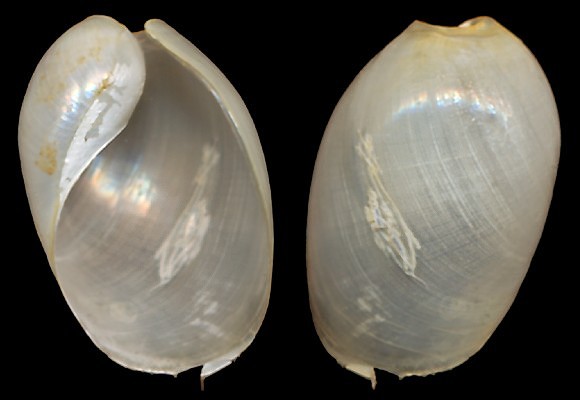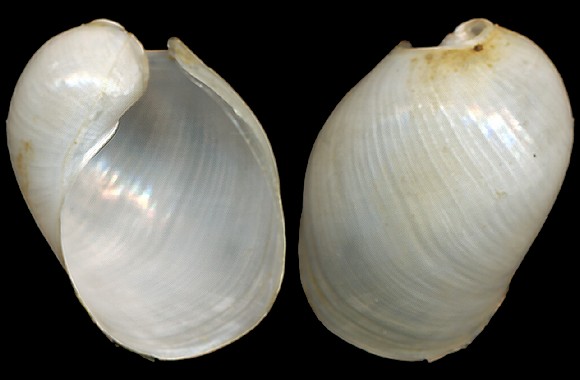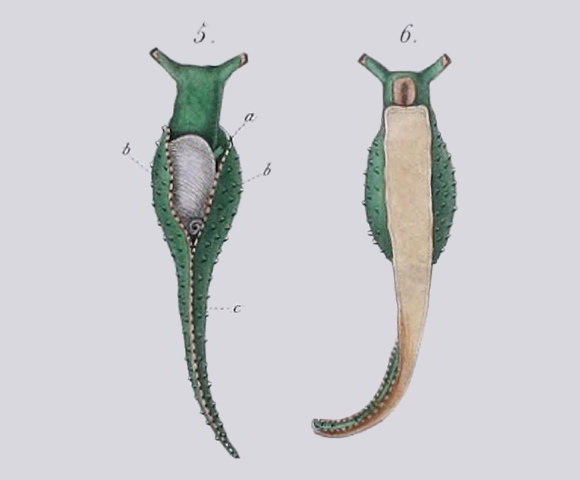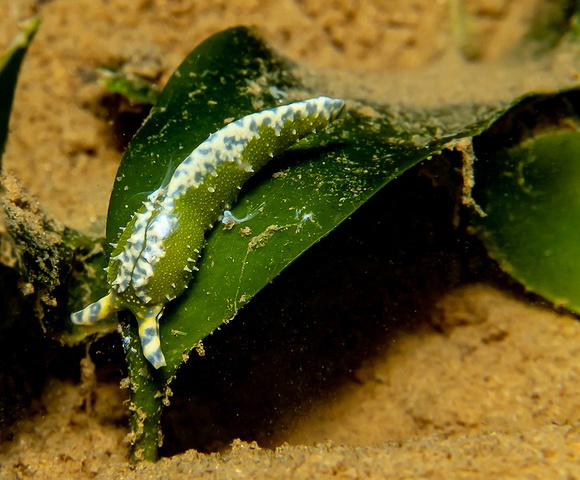
Grazer in the infralittoral.
Synonyms: brachycephala, gargottae, gravesi, sieboldii.
5m deep, on algae, Mazarrón, Murcia, S. Spain. 9mm.

The species, which fed on Caulerpa prolifera, begins to eat the taxifolia, but in such poor quantities that some scientists propose to welcome new exotic browsers, like the caribbean Oxynoe azuropunctata Jensen. Unlike Lobiger serradifalci, whose feeding behaviour could enhance the dispersion of taxifolia, the habit, in olivacea, of completely draining the thallus by drilling numerous holes to vampirize the content, kills the fronds by necrosis (Suty, 2010). – Same spot, 10mm.

« On each side of the middle region of the body rises and curls a sort of semi-discoid wing concealing the lateral parts of the shell. The upper or free edges of these two wings meet in the median line at the origin of the posterior region, where they merge with a crest or ridge which reigns all along this region (Fig. 5, c). The animal can shrink and dilate these wings, which seem to me to be the analogs of the appendages of the preceding genus [Lobiger]; these movements are, however, very limited. » – Ibid. p.55.
